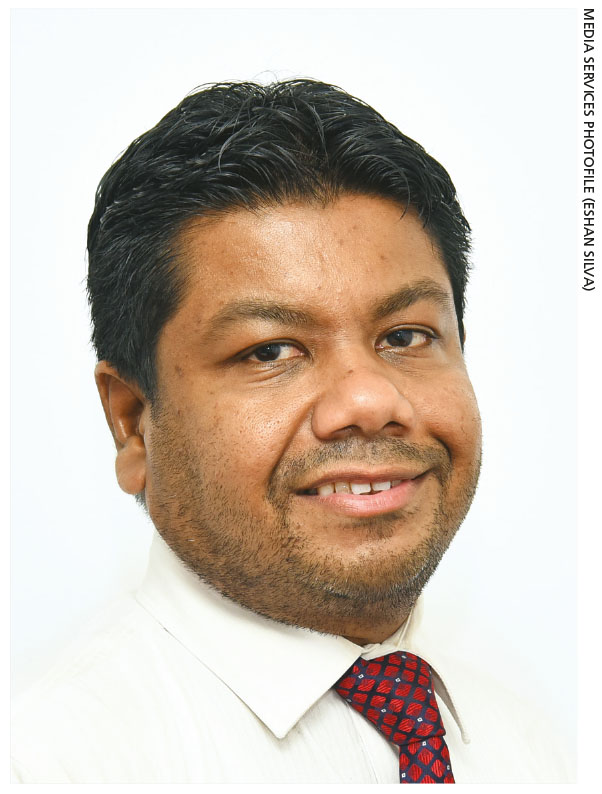MARKETING PROFESSION
Compiled by Lourdes Abeyeratne
AGENCIES TO KEEP IT REAL
Sudeep Perera emphasises the relevance of key analyses in communications
 Q: How do communications strategies here in Sri Lanka compare with those in neighbouring countries?
Q: How do communications strategies here in Sri Lanka compare with those in neighbouring countries?
A: In some countries, they’re quite advanced compared to the local context. In India for example, separate teams handle strategic brand development and tactical brand building. In many instances in Sri Lanka however, one team may be engaged in both aspects.
Comparatively, channel specific creative strategies are more advanced in the region in contrast to our focus on limited communications. Local companies tend to use the same creative materials across all channels rather than devising strategies for different media.
In communications planning, our neighbours interpret psychographics and target individuals based on certain qualities while we practise mass targeting based on socioeconomic indicators.
Advanced tracking techniques prevail in the region. Loop rooms with integrated processes to analyse sales, research, competitor activity and social media data aren’t used commonly in Sri Lanka. Such techniques enable effective decision making in real-time campaigns.
Q: How do financial services institutions evaluate the effectiveness of such strategies?
A: As in many industries, sales figures would be a key evaluation factor. But it goes beyond this because brand equity and perceptions are critical in the industry, as are safety and trust. Salience factors are essential to building positive perceptions.
Personal interaction is also vital. This doesn’t merely encompass marketing activities but also personal selling, which means that service quality and CRM are areas that need special attention.
Q: What are the challenges in developing communications strategies?
A: Building trust is a challenge in the financial services industry. Many procedures must be followed including customer charters.
Breaking through clutter in a competitive industry is always a tough ask.
Businesses must focus on ‘execution cut through’ and ‘brand cut through,’ striking a balance between the creativity of execution and brand element so that both stick in consumers’ minds. Moreover, the service element must fill the gaps between what’s communicated and the service delivered.
The customer journey is complicated because of the numerous communications channels there are. Therefore, companies must identify and be present at relevant touch points to tap different consumer profiles.
Q: How can businesses ensure that communications provide value for money?
A: Businesses must be aware of market dynamics and customer feedback to adjust their strategies in a rapidly changing environment. Research should be conducted periodically on brand awareness, top of the mind recall, consumer behaviour, service standards, customer satisfaction, general market trends and competitor activities.
Investments in communications channels must be efficient and effective. Software can track and identify the most efficient investment for any channel. In the digital sphere, many activities are easily tracked. Businesses can monitor the extent of reach, markets tapped, engagement levels, customer satisfaction and sentiment analysis, and obtain direct feedback.
Q: How has technology impacted communications development?
A: The digital landscape has had a significant impact. Many virtual platforms can be used for communication and in certain fields, for transactions as well. It’s evident that young people are moving to digital platforms, compelling companies to make their presence felt in this sphere to capture these emerging segments. Given the digital arena’s limited controls, companies must be specific in their choice of platforms. A financial services institution should be present on reputable platforms rather than gossip sites so that its communications reliability isn’t undermined.
Q: How can local communications capabilities be developed?
A: With consumer profiling, research must be improved to identify potential customers by studying behaviour and buying patterns among other traits. ROI modelling capabilities should be enhanced as the local skill set can be limited. The production of materials such as TV commercials could be improved. For example, colour treatment could be developed by collaborating more with the film sector, maximising both investments and resources.
Finally, credible award ceremonies must be launched to recognise effective communications strategies – i.e. by recognising communications based activities, creativity, strategic planning and other areas. This will highlight their importance and drive innovation along with creativity.






Nice interview.
Awards are a waste of time and money. Sri Lanka must get on with work.